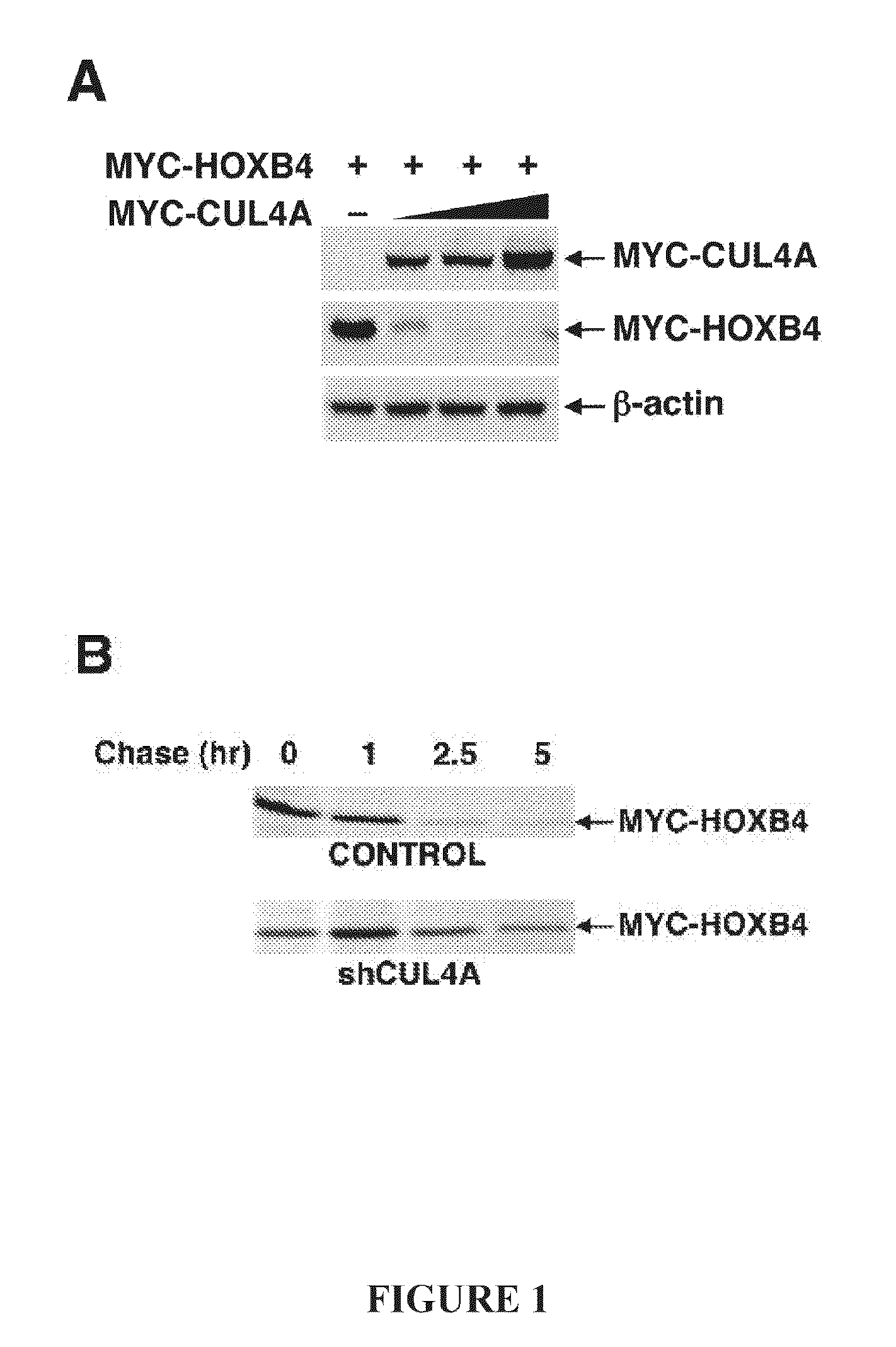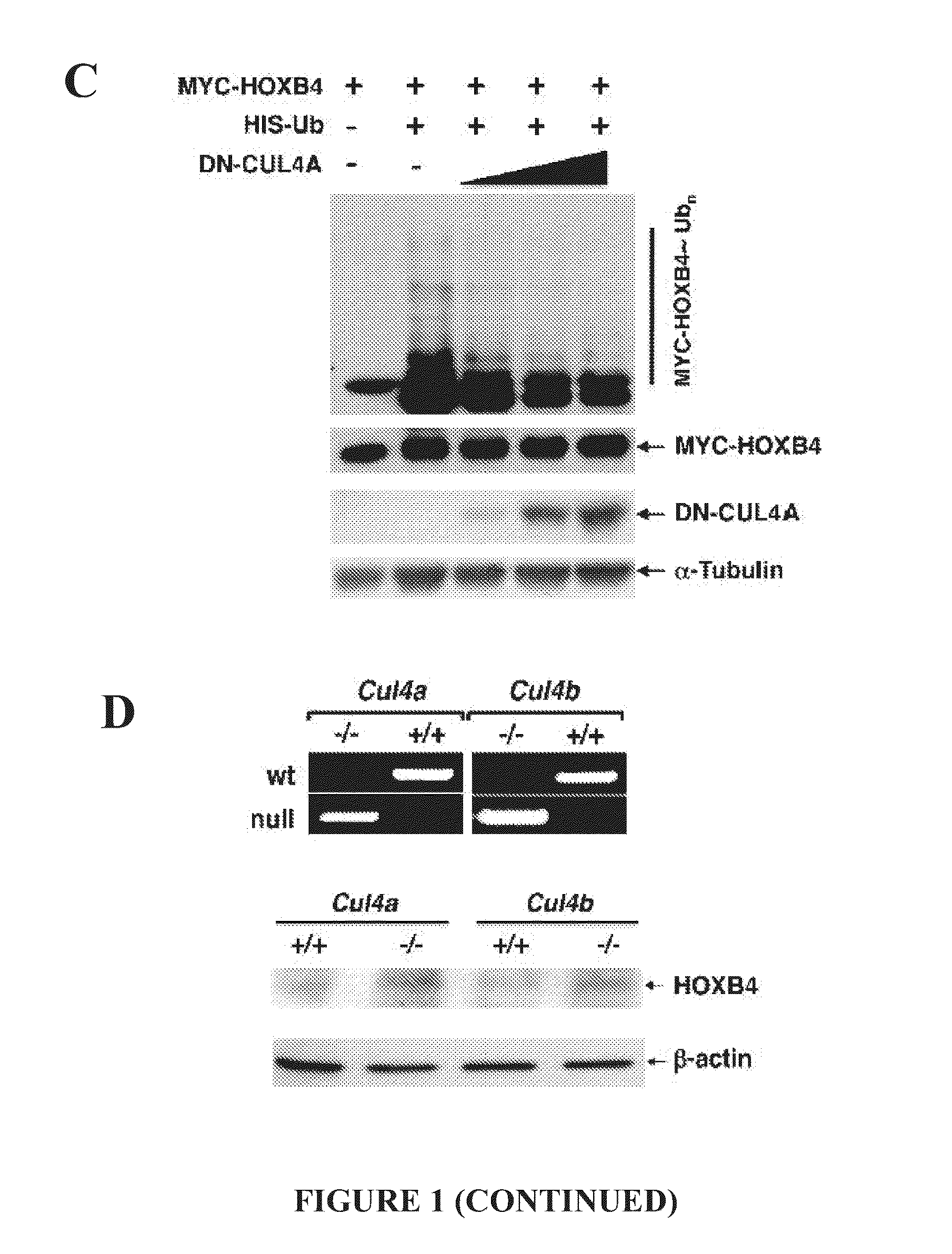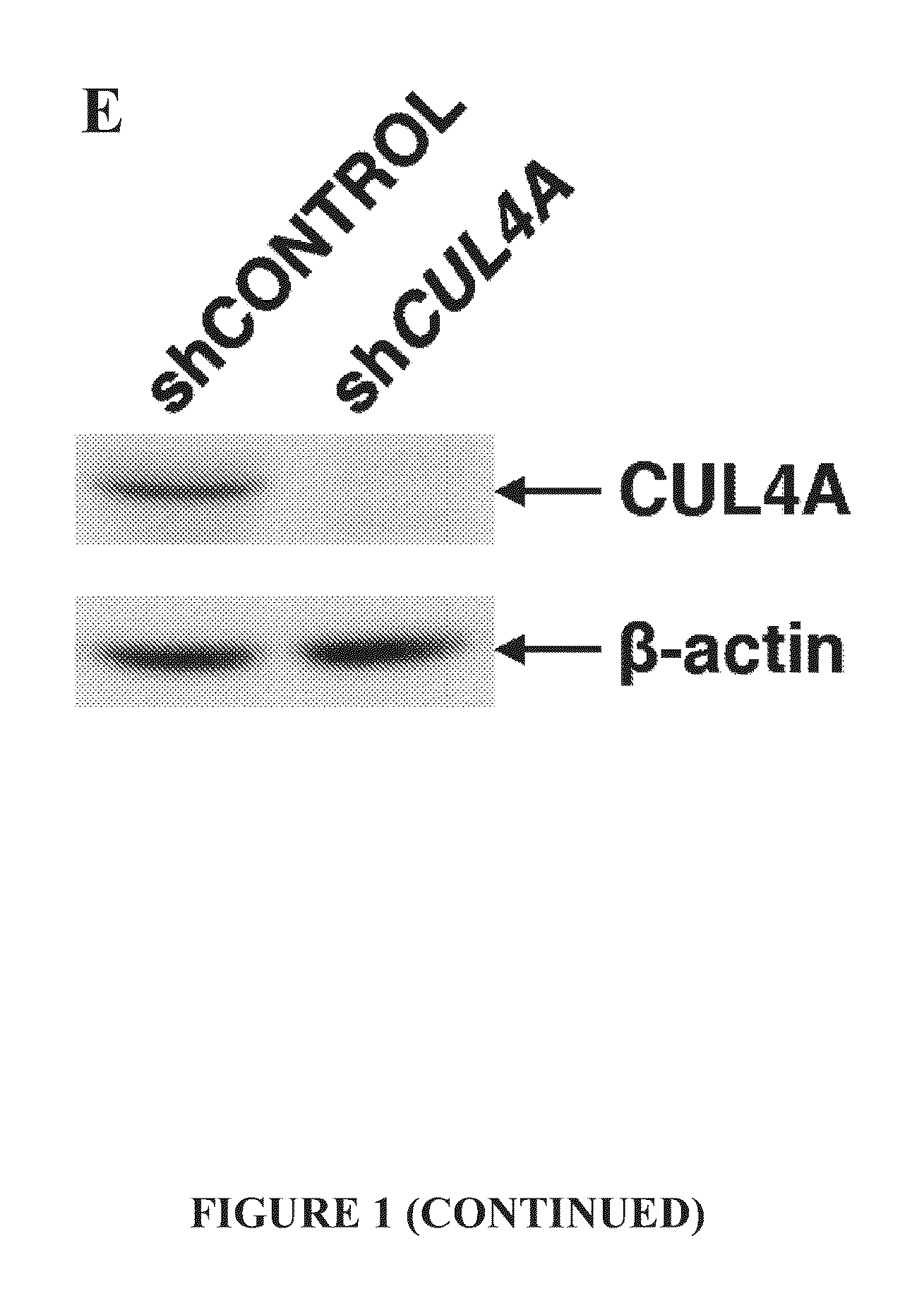Compositions and methods for the expansion of stem cells
a stem cell and population technology, applied in the field of stem cell population expansion, can solve the problems of murine hsc proliferation, shortening the life of cells, and largely unknown mechanisms underlying transcriptional regulation of hox genes during hematopoiesis, and achieve the effect of expanding the stem cell population and prolonging the cell li
- Summary
- Abstract
- Description
- Claims
- Application Information
AI Technical Summary
Benefits of technology
Problems solved by technology
Method used
Image
Examples
example 1
General Methods
Cell Cultures, Plasmids and Protein Extracts
[0115]Steady-state levels of epitope-tagged HOX proteins in response to increasing levels of MYC-CUL4A were determined following transfection of 293T cells with 1 μg of the indicated HOX plasmids (lanes 1-4) and 1, 3, or 9 μg MYC-CUL4A (lane 2-4). All DNA amounts were normalized with vector DNA, and protein levels were detected using standard Western blotting techniques with anti-MYC (Roche), anti-HA (Covance) and anti-β-actin (Santa Cruz) antibodies.
[0116]To measure the effect of CUL4A silencing on HOXB4 half-life, HeLa cells were transiently transfected with 6 μg MYC-HOXB4 and 6 μg shCONTROL or 6 μg shCUL4A. Pulse-chase of transfected HeLa cells was performed as previously described in Zhang, Y., et al. Embo J. (2003); 22(22):6057-6067. The half-lives of 35S-labeled-MYC-HOXB4 and HOXB4 degron mutants were determined by immunoprecipitation and immunoblotting with anti-MYC antibody, and quantitated via phospho-imaging.
[0117]...
example 2
CUL4A Mediates Ubiquitination of HOXB4
[0124]In order to evaluate whether HOXB4 is subject to CUL4A-mediated degradation was first undertaken. The steady-state levels of MYC-tagged HOXB4 decreased corresponding to increasing levels of MYC-CUL4A (FIG. 1A). Conversely, knockdown of CUL4A by shRNA prolonged the half-life of HOXB4 (FIG. 1B, 1E). Following the addition of MG132, it was observed that HOXB4 is polyubiquitinated, and enforced expression of dominant-negative CUL4A dramatically reduced ubiquitination of HOXB4 in a dose-dependent manner (FIG. 1C).
[0125]To determine the role of CUL4A and CUL4B on HOXB4 stability in hematopoietic progenitor cells, the endogenous HOXB4 protein levels in hematopoietic stem and progenitor cells derived from Cul4a- and Cul4b-null mice were compared with those from their wild-type littermates. It was observed that the deletion of either Cul4a or Cul4b resulted in the increased accumulation of HOXB4 protein levels (FIG. 1D). Taken together, these resul...
example 3
CUL4A-Specific HOXB4 Degron
[0127]A sequence alignment of the highly conserved homeodomain present in all HOX proteins revealed a conserved LEXE motif in helix I of the full-length protein that is not involved in DNA binding (FIG. 3A). Because several HOX paralogous groups are post-translationally regulated by CUL4A, it was examined whether the conserved LEXE motif may comprise the CUL4A-dependent degron, or the substrate sequence that directs its recognition by a specific ubiquitin ligase for degradation. While mutation of the first two residues of the LEXE [SEQ. ID NO: 2] motif prolonged the HOXB4 protein half-life compared to wild-type protein, the triple mutant, HOXB4(M3) [SEQ. ID No.:4], dramatically extended HOXB4 protein stability (FIG. 3B, C).
[0128]To determine if the LEXE motif in the context of its native tertiary structure is required to target proteins for CUL4A-mediated degradation, wild-type or mutant HOXB4 homeodomain was fused to eGFP, a long-lived protein that is not...
PUM
| Property | Measurement | Unit |
|---|---|---|
| pH | aaaaa | aaaaa |
| time | aaaaa | aaaaa |
| time | aaaaa | aaaaa |
Abstract
Description
Claims
Application Information
 Login to View More
Login to View More - R&D
- Intellectual Property
- Life Sciences
- Materials
- Tech Scout
- Unparalleled Data Quality
- Higher Quality Content
- 60% Fewer Hallucinations
Browse by: Latest US Patents, China's latest patents, Technical Efficacy Thesaurus, Application Domain, Technology Topic, Popular Technical Reports.
© 2025 PatSnap. All rights reserved.Legal|Privacy policy|Modern Slavery Act Transparency Statement|Sitemap|About US| Contact US: help@patsnap.com



